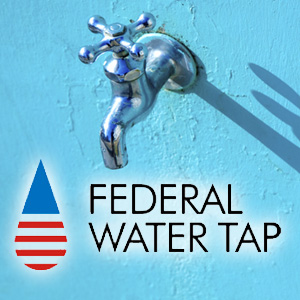Federal Water Tap, February 27: New EPA Administrator Sworn In
The Rundown
Scott Pruitt, new EPA administrator, gives a welcome address to agency employees. President Trump could issue an executive order this week targeting Clean Water Act interpretation. California governor requests federal aid for dam repairs. The U.S. Geological Survey assesses an aquifer storage project in New Mexico. The EPA selects a new water utility finance center. And lastly, federal officials will hold a meeting this week on the future of Navajo Generating Station.
“Regulations ought to make things regular. Regulators exist to give certainty to those that they regulate. Those that we regulate ought to know what we expect of them, so that they can plan and allocate resources to comply. That’s really the job of the regulator, and the process we engage in.” — Scott Pruitt, U.S. Environmental Protection Agency administrator, explaining his views on regulation in his welcome address to agency employees.
By the Numbers
March 1: Date of Senate committee hearing on flood control infrastructure, prompted by the erosion of the Oroville Dam spillways in northern California. Witnesses have not yet been announced. (Senate Committee on Environment and Public Works)
$US 445 million: Federal funding to repair state-regulated, high-hazard dams that was authorized by a water infrastructure bill that Congress passed in December. California Gov. Jerry Brown, in response to the Oroville emergency, has requested a share of those funds. (California Governor’s Office)
34 percent: Odds of a lower Colorado River Basin shortage in 2018, down from near 50-50 last summer. (Bureau of Reclamation)
News Briefs
Pruitt Steps Into EPA Leadership Role
Scott Pruitt, sworn in four days earlier as U.S. Environmental Protection Agency administrator, explained to staff his view of the agency’s mission.
Calling the U.S. political environment “toxic” and counterproductive for solutions, Pruitt promised to uphold three personal qualities during his tenure as the nation’s top air and water regulator: problem-solving, civility, and listening.
As for policy, Pruitt criticized “sue and settle” tactics – lawsuits filed by citizens and environment groups to force agency action on matters that it is required by law to address. He called regulation by litigation an abuse. Pruitt also supported federalism in environmental regulation, meaning a greater role for state agencies in inspection and enforcement. Water and air pollution, however, have a knack for crossing borders and not all states have the money or the will to enforce the law with equal rigor.
Executive Order Pending on Clean Water Rule
President Donald Trump will sign an executive order as soon as Monday urging repeal of a rule meant to clarify the scope of the Clean Water Act, the Wall Street Journal reports. Actually repealing the rule will take longer, either through new rule-making or an act of Congress.
Issued by the Obama administration, the Clean Water Rule was adopted in 2015 then stayed by a federal appeals court five months later in response to lawsuits by 18 states that feared an expansion of federal regulatory reach.
New Water Finance Center
The EPA selected the National Rural Water Association to lead a water finance center to serve Region 8, which covers Colorado, Montana, North Dakota, South Dakota, Utah, and Wyoming. There is one water finance center in each of the 10 EPA regions. The centers provide technical assistance to utilities on designing water rates, applying for loans, and balancing their finances.
Studies and Reports
Aquifer Storage in New Mexico
Can these channels hold water? And will the water become polluted? The U.S. Geological Survey investigated these and other questions as it assessed two arroyos in the Pojoaque Basin of New Mexico as sites for an aquifer storage project. The sites could be used to store water diverted from the Rio Grande as part of a water rights settlement. The study found little likelihood of pollution but limited storage capacity and a leaky basin.
The Bureau of Reclamation, meanwhile, awarded a $US 91.9 million contract to begin building the Pojoaque regional water system that is part of the settlement. Total capital cost is $US 261 million.
On the Radar
Navajo Generating Station Meeting
On March 1, the Department of the Interior will host a stakeholder meeting to discuss the future of Navajo Generating Station. The utility owners of the largest coal-fired power plant in the West indicated earlier this month that they plan to close the facility after 2019.
Invited to the meeting are the four utility owners of the facility — Salt River Project, NV Energy, Tucson Electric Power, and Arizona Public Service — the Navajo and Hopi tribes, and the Central Arizona Project, which uses electricity from the plant to pump Colorado River water nearly 3,000 feet uphill to Phoenix and Tucson. Also invited are tribes that get water from the Central Arizona Project and Peabody Energy, which operates the coal mine that supplies Navajo Generating Station.
The purpose of the meeting is to discuss options for operating the power plant beyond 2019. The utility owners want to shutter the facility and pursue cheaper power from natural gas, but the federal government, which has a 24 percent stake in the plant, and the Navajo and Hopi governments, whose tribes rely on royalties and jobs connected to the plant, would like to keep it open.
WIFIA Webinar
The EPA will hold a webinar on March 7 on how to apply for WIFIA, the new federal water infrastructure financing program. Register here. Utilities, governments, or private companies that partner with a public agency are eligible for loans. The deadline for submitting letters of interest for the first round of funding is April 10.
Guess How Much Water Is Behind the Dam
In its latest prize competition, the Bureau of Reclamation is offering $US 50,000 to the best solution for estimating reservoir storage capacity. The buildup of sediment can cut initial capacity. In the last year Reclamation has launched competitions for preventing animals from burrowing into levees, improving weather forecasts, and reducing desalination brine.
Federal Water Tap is a weekly digest spotting trends in U.S. government water policy. To get more water news, follow Circle of Blue on Twitter and sign up for our newsletter.
Brett writes about agriculture, energy, infrastructure, and the politics and economics of water in the United States. He also writes the Federal Water Tap, Circle of Blue’s weekly digest of U.S. government water news. He is the winner of two Society of Environmental Journalists reporting awards, one of the top honors in American environmental journalism: first place for explanatory reporting for a series on septic system pollution in the United States(2016) and third place for beat reporting in a small market (2014). He received the Sierra Club’s Distinguished Service Award in 2018. Brett lives in Seattle, where he hikes the mountains and bakes pies. Contact Brett Walton





